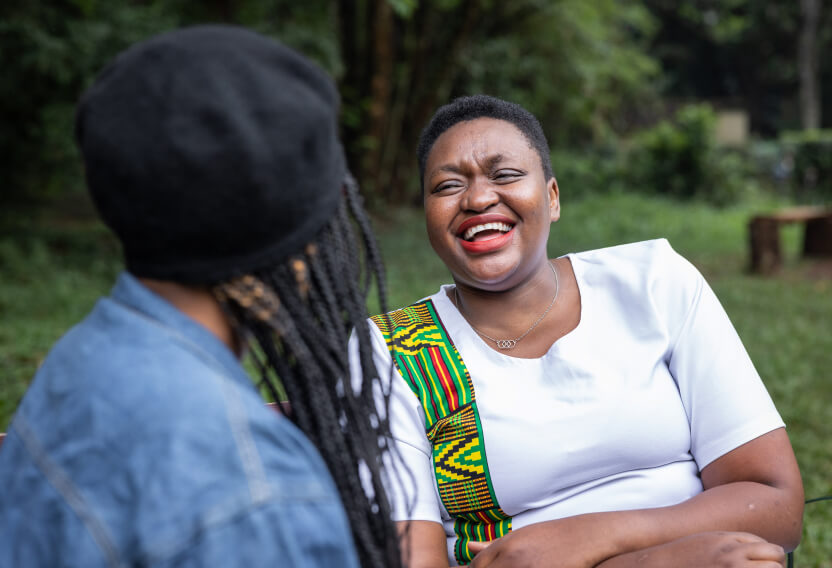
Stronger together: Why partnerships are essential in the fight against HIV

There’s a misconception that HIV is a solved problem – it is not, and remains a significant global health challenge. But with collaboration, driven by deep community engagement and strategic partnerships, we move one step closer to ending the epidemic.



It has become increasingly clear that the response to HIV cannot be met by individual actions alone.
“We’ve seen tremendous progress in the effort to end HIV since the first case was diagnosed over 40 years ago and a lot of the credit for that goes to the HIV community,” says Helen McDowell, Head of Government Affairs and Global Public Health at ViiV Healthcare. “Those facing the greatest impact from the virus demanded a seat at the table and a voice in their care.”

The collaboration across healthcare, governments and community is what makes the HIV response unique and will be critical to ending the epidemic.
Helen McDowell
Thanks to decades of research to develop effective HIV treatments – together with successful prevention, diagnosis, and care – HIV has become a manageable chronic health condition, enabling people living with HIV to lead long and healthy lives. But those advances have created the impression that HIV is no longer a global health threat. It still is.
In 2022, there were 39 million people living with HIV globally and 1.3 million new diagnoses. While certain communities are disproportionately impacted by HIV, the HIV population is diverse. That means different approaches are needed globally to provide education, services and care.
The answer comes in the form of bold partnerships that bridge the gap between science, society, and the individual.
From planning, development, and advocacy, all the way through to implementation and best practice sharing, collaboration can take many forms. But the evidence is clear, people living with HIV are best served when we work together.



“The journey from manufacturing facility to patient is incredibly complex and full of potholes,” says Mitchell Warren, Executive Director of AVAC, a global HIV prevention organization.
So, the only way to deliver these life changing medicines with equity and impact is through collaborations that break down barriers.
Mitchell Warren

AVAC, a civil society group that promotes equitable access to HIV prevention and treatment methods but takes no funding from pharmaceutical companies, is one of ViiV’s 50 active stakeholder partners – which collectively span the political, scientific, and legal realms.
Bringing together AVAC’s experts in civil advocacy with the innovators of medical science has relied on mutual transparency, honesty, and trust. But, at each stage of the implementation process, partnerships have helped to dismantle major roadblocks.
across 128 countries
One such success has been ViiV’s relationship with the Medicines Patient Pool (MPP). Thanks to this decade-long partnership, WHO-recommended treatment had reached 24 million people living with HIV by the end of 2023 – across 128 countries including all low-income, least developed, lower-middle-income and sub-Saharan African countries, as well as some upper middle-income countries. The partnership started with ViiV’s HIV treatments and has now evolved to help enable sustainable long-term access to long-acting HIV prevention technologies.

“We now have the tools to protect individuals from acquiring HIV for longer durations, but we need a network of partners to get these medicines into the hands of those who need them most,” says McDowell. “Partnering with AVAC, amongst others, who are deeply connected to parts of the HIV response that require meaningful relationships, has driven a huge amount of progress in a short amount of time.”
Collaboration has also been instrumental in speeding up production of ViiV medicines, helping them reach hard to access communities.
Meanwhile, ViiV is working with partners to support introduction and access to ViiV-manufactured long-acting medicines in lower income countries and across Sub-Saharan Africa (where rates of new diagnoses are highest) at non-profit prices. Educational programs that inform on the direction, prevention, and management of HIV – as well as the easy access to anti-retrovirals – are key to the success of efforts to end the epidemic.
Every single advance in HIV has had a scientific component. But real progress happens when science meets policy, and policy meets community.
Mitchell Warren



Where high-level partnerships enable science to thrive, grassroots level work ensures that new medicines have real impact on the ground.
Positive Action grants spearhead this approach, uplifting the voices of those most affected by the epidemic, and investing in programs that meet specific needs.
“Women, though disproportionately affected, continue to be marginalized in the fight against HIV,” says McDowell.
But one thing we have learned from deep listening in the community is that an empowered woman can not only protect herself but also have a multiplying effect on the communities in which she serves.
Mitchell Warren

Take mothers2mothers, a program where young women, known as 'Mentor Mothers,' are being trained to provide invaluable support and guidance to mothers living with HIV and their children. This peer-to-peer counselling not only furthers access to essential care for women but also fosters a sense of solidarity and resilience within communities.

Another program, Risks to Reasons, seeks to address the impact of HIV in Black American women, who are 15 times more likely to acquire HIV compared to white American women.
Since its inception, the Positive Action program has challenged existing HIV prevention approaches and developed practical guides for how service providers and public health experts can communicate with Black women living with HIV and connect them with relevant services.

In the relentless pursuit of an HIV-free world, collaboration has emerged as a powerful weapon, transcending organizational barriers to drive transformative change.
From pioneering partnerships between global stakeholders to grassroots initiatives rooted in community empowerment, every joint endeavor demonstrates that with HIV, we are always stronger together.




